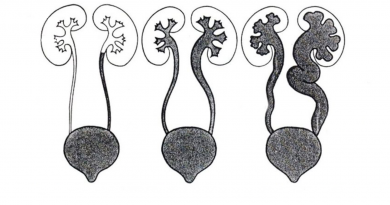Undesended Testis
The testes of all male babies found in the abdominal cavities of the fetus before the birth. As the birth approaches, these testicles follow a path through the abdomen and reach the inguinal canal and then reach the final site of the scrotum. During this migration, if testiscles can not reach the scrotum and fail on the road, it is called undescended testicle. It is known that in some babies who have undescended testes during delivery, the testes can reach the scrotum within the first 6 months. However, it is not necessary to wait more than 6 months for this delayed landing and expert control is required.
It can be one-sided or two-sided. In most cases, the testis remains in the groin region (80%). In examination of the doctor and sometimes even in the family, the testicle in the inguinal region is palpable and cannot be lowered into the bag. Rarely, the testis may not yet come out of the abdomen or may have vanished by disrupting the blood supply during the process in the womb. In this case, the testicle is not palpable during the examination (20%).
The retractile testes is a separate condition. In this cases, the testis occasionally stops in the bag and in the groin canal. Overactivity of the muscles surrounding the testicular vessels is thought to cause this condition. The need for intervention is determined according to the volume loss of the testis and the time spent in scrotum. They are usually advised to stay on follow-up. Rarely, they become undescended testes and require intervention.
Normally, the temperature of the scrotum in men is 1-2 degrees lower than body temperature. Failure of the testis to reach the colder temperature causes exposure to heat and reduces the ability to produce sperm. In unilateral cases, infertility is not more than in the community due to the presence of a solid testicle, but in bilateral cases there is an increased infertility problem. Another disadvantage is the increased risk of testicular cancer in the non-scrotal testis compared to the general population. It also causes psychological problems in older ages. These adverse effects are related to the placement of the testis, and the time of decending time. For these reasons, they should be intervened and brought down to their bags regardless of their level. Existing risks remain stable after the intervention even they don’t reset.
The physical examination performed by the specialist in the diagnosis is sufficient. Advanced tests such as ultrasonography and MRI have no place in the diagnosis.
The best time for treatment is when the risks of general anesthesia begins to decrease and the testis is not significantly affected (6-12 months).The definitive and widespread treatment of undescended testes is surgical approach. The principle of surgery is that after the testis is exposed, the accompanying inguinal hernia in many undescended testis patients is repaired and delivered to the bag and fixed in the right place. It has a high success rate. The approach is different in testes that are not palpable during the examination. Whether the testicle remains in the abdomen, or if it destroys its own blood during its descent, should be clarified. Whether the testis is located in the abdomen and its location is provided by laparoscopic method (entering into the abdomen with a light instrument, detecting the presence of the testis and lowering it to its right position if available).
In rare cases, hormone therapy can also be applied. It may be preferred in cases where the testis is close to the bag according to the age of the patient. The success rate is lower than surgery. Transient side effects such as growth in the bag and penis, increased hair growth in the genital area, and aggressiveness during hormone use may occur.




